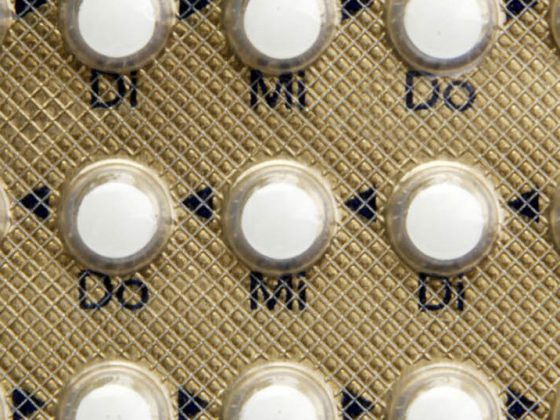Prof. Jürg Hafner, senior physician at the Dermatology Clinic at the University Hospital Zurich and acting president of the Swiss Society of Dermatology and Venerology, answered DERMATOLOGIE PRAXIS’s questions on the state of the society and the discipline.
Prof. Hafner, you have been President of the SGDV since September 2011. What made you decide to take on this office?
The joy of being able to stand up for a meaningful cause, the extremely varied human contacts and the insight into numerous larger and smaller problems that have to be solved creatively and constructively. The ability to organize, travel and visit, mediate in conflicts and deblock deadlocked situations. However, interest in the subject of dermatology and venereology, in the fate of our patients, in the working conditions of physicians, and in health policy were certainly also decisive factors.
What are the biggest changes to the company since its founding in 1913?
The core of the SGDV has not changed significantly over the years. The world, however, has changed extremely and with it medicine.
In the SGDV, the approximately 100 dermatologists of the five university hospitals and 5 cantonal and city hospitals work very well together with the approximately 350 specialists for skin and venereal diseases in private practice. Accordingly, the Board of Directors is equally composed of research and practicing dermatologists from all parts of the country. Since 2002, the company has had a professionally run general secretariat in Neuchâtel. The General Secretary Monica Pongratz leads our hub with a lot of human and organizational skills.
What topics is the company currently dealing with besides its own anniversary?
In terms of health policy, the SGDV advocates free access for patients to the physician of their choice. The SGDV has participated at several levels in discussions on how to secure the next generation of medical students and the next generation of general practitioners with appropriate measures in the coming years. The SGDV advocates for framework conditions under which both general practitioners and specialist physicians can provide meaningful medicine and efficient care for their patients even today under the aggravated conditions of cost pressure.
Large time resources and considerable know-how are invested in the continuing education of future dermatologists at the clinics as well as in the ongoing training of colleagues in private practice. Since last year, the SGDV has been organizing the National Skin Cancer Day (this year on May 13, 2013) on its own. Skin Cancer Day reminds the public of the importance of protecting skin from excessive sun exposure and of early removal and treatment of conspicuous moles or incipient white skin cancer.
How can you imagine working on the SGDV board?
The General Secretariat in Neuchâtel is our control center. This is where all the information comes together and from where the members are regularly informed about all relevant topics in a timely manner.
The full board consists of 16 members from practices and clinics in all three parts of the country and meets twice a year. During the year, the Board members work on their dossiers independently, constantly exchanging information with the President and the General Secretariat. The core board (committee) also meets three times a year for topic-centered work. The majority of board members serve on other health policy boards and other boards of other professional societies and umbrella organizations. Thanks to this excellent networking, the SGDV is always well informed at an early stage about all changes in the health care system and is able to contribute its specialist concerns well.
Is there a shortage of board members?
Contrary to all fears, we have had no problems at all in the past years in filling the board with motivated people. I think the members realize that there is a positive wind blowing in the society. It is a concern of the experienced professional colleagues to give back to Swiss dermatology through their honorary commitment to the SGDV something of what they themselves had received along the way during the phase of professional development. Volunteer work is very often grateful and brings you many friendly contacts.
Preparations for the SGDV Congress in Montreux from September 19-21, 2013 are in full swing. What can congress participants expect?
In addition to the excellent congress program, which as every year presents a summary of the most important professional developments and innovations, this year we will highlight the history of the SGDV and celebrate the occasion together with our most important international friends and honorary members in a festive setting. In addition, we are working on an anniversary book, on which many members of our society, young and old, famous and less famous, are equally committed to writing.
What special anniversary highlights are planned for 2013?
On April 24, 2013, we celebrated the actual founding day with a small but very congenial party in Geneva. Also present were some colleagues from France, who are particularly connected to dermatology in the French-speaking part of Switzerland. The second highlight is formed with the mentioned annual congress and the festive evening in Montreux. On this occasion, the SGDV invited the representatives and long-time friends of the neighboring nations and the international dermatological societies. The third highlight is the “Centennial” book entitled “Spirit and Soul of Swiss Dermatology and Venerology”. It will be published in English and posted on the SGDV website so that all our dermatological friends abroad, who do not necessarily speak our national languages, can share and be inspired by this work.
How do you assess the situation in Swiss dermatology in the next 10 years?
The future of Swiss dermatology will be golden and rocky at the same time. Demand for dermatology services will continue to grow steadily and rapidly because of the rapid increase in skin cancer and because of the frequency and ever-improving treatment options for inflammatory skin diseases.
The professional and day-to-day working conditions of the medical profession will continue to become more difficult. Already today, physicians spend too much energy and time on administrative work, usually to justify the medical measures taken for the clarification and treatment of their patients. The legal framework of the medical profession and within all of medicine has become more complicated. The documentation requirement absorbs a lot of time. The legal disputes are on the increase and in a large number of cases are simply absurd in terms of content and extremely demotivating in human terms. It is to be hoped that the development will not be as fatal as the last twenty years in Germany, where doctors leave their home country in large numbers to practice their profession under more acceptable conditions abroad.
The almost unimaginable progress and enormous benefits from biological research have long since reached the population, which is getting healthier and older and logically wants to participate in this progress. This inexorable development inevitably brings the health care systems of developed countries into economic and health policy conflict. It requires a great deal of responsibility and wisdom on the part of all parties involved to resolve these conflicts in such a way that it will continue to be possible to use society’s limited resources for meaningful and humane medicine and not to reverse the progress that has been made. The SGDV is ready to contribute to this important discussion for a meaningful development of modern medicine.
Interview: Séverine Bonini












